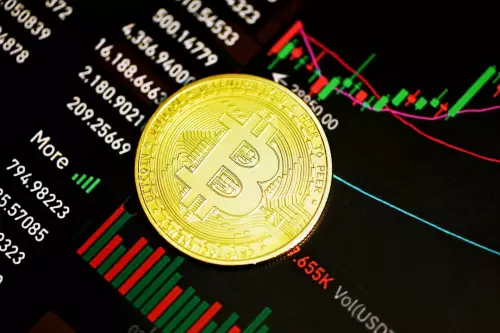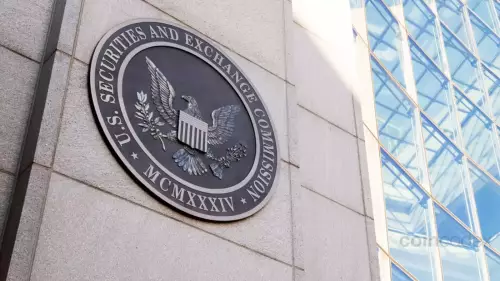 |
|
 |
|
 |
|
 |
|
 |
|
 |
|
 |
|
 |
|
 |
|
 |
|
 |
|
 |
|
 |
|
 |
|
 |
|
Cryptocurrency News Articles
Visa, Stablecoins, and Payments: A New Era for Global Transactions
Sep 30, 2025 at 09:22 pm
Visa's foray into stablecoins is reshaping international payments, promising faster, cheaper, and more compliant transactions. Discover the latest trends and insights.

Visa, Stablecoins, and Payments: A New Era for Global Transactions
Visa's recent initiatives integrating stablecoins into its payment infrastructure signal a major shift in the world of finance. The move aims to revolutionize cross-border payments, making them faster, cheaper, and more efficient. This is a breakdown of what's happening.
Visa's Stablecoin Pilot Program: A Game Changer
Visa is not just dipping its toes into the world of stablecoins; it's diving in headfirst. The company launched a pilot program integrating stablecoins into its Visa Direct service. Announced in late September 2025, this initiative allows banks, remittance providers, and enterprises to pre-fund cross-border payouts using stablecoins like USD Coin (USDC) and Euro Coin (EURC).
The goal? To kill the inefficiencies, costs, and delays that have long plagued international payments. By using stablecoins, settlement times are slashed, and capital lockups are reduced. It's like upgrading from snail mail to email for international money transfers.
Why Stablecoins?
Stablecoins have been talked about as a practical and cost-effective way to move money across borders. Traditionally, companies had to maintain separate reserves in each country, which could cause delays, especially on weekends and holidays. Stablecoins solve these problems.
Visa's pilot allows businesses to make international payments without needing to hold a bunch of dollar or euro reserves. Recipients get their funds directly in their local currency, making transactions real-time. That’s a big deal for businesses operating globally.
Broader Implications for the Payments Landscape
This move isn't happening in a vacuum. Other major players are also exploring blockchain-enabled alternatives to traditional settlement systems. Even SWIFT is getting in on the action with its own blockchain initiative. It seems like everyone's racing to adapt to a tokenized future.
Visa’s global network, which spans over 200 countries, means that stablecoin integration could seriously transform liquidity management and cut down on operational headaches. Plus, it reassures regulated institutions that are interested in digital assets but worried about compliance. It's like Visa is building a bridge between the wild west of blockchain and the established world of regulatory frameworks.
What's Next?
Visa is starting with a select group of financial institutions and remittance partners. If all goes well, we could see broader adoption of stablecoin-powered settlement across Visa’s vast network. This could also give Visa a competitive edge against fintech firms and blockchain-native payment providers.
Regulators and financial folks will be watching Visa’s pilot program closely. Its success could shape the future of stablecoin adoption across the financial sector and influence ongoing debates about the role of digital assets in global finance.
Notabene Flow: Streamlining B2B Stablecoin Payments
While Visa is making waves with its consumer-facing solutions, companies like Notabene are focusing on the B2B side of things. Notabene Flow is designed to bring typical banking payment functions into corporate wallets, making cross-border stablecoin transfers more manageable and compliant.
Flow integrates authorizations, invoicing, and dispute management directly into on-chain transfers. It’s all about control, traceability, and coordination between businesses. By using verified identifiers and structured messaging, Flow helps companies comply with regulations and reduce operational risks.
The Future is Tokenized
The integration of stablecoins into payment systems represents a major step forward. Visa's initiatives, along with solutions like Notabene Flow, are paving the way for a more efficient, transparent, and accessible financial future. As blockchain adoption accelerates, we can expect to see even more innovation in this space.
So, keep an eye on Visa and other players in the stablecoin game. They’re not just changing how we pay; they’re building the financial infrastructure of tomorrow. Who knows, maybe one day we'll all be paying for our morning coffee with stablecoins. The future is looking pretty crypto-friendly, folks!
Disclaimer:info@kdj.com
The information provided is not trading advice. kdj.com does not assume any responsibility for any investments made based on the information provided in this article. Cryptocurrencies are highly volatile and it is highly recommended that you invest with caution after thorough research!
If you believe that the content used on this website infringes your copyright, please contact us immediately (info@kdj.com) and we will delete it promptly.






























































